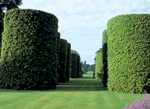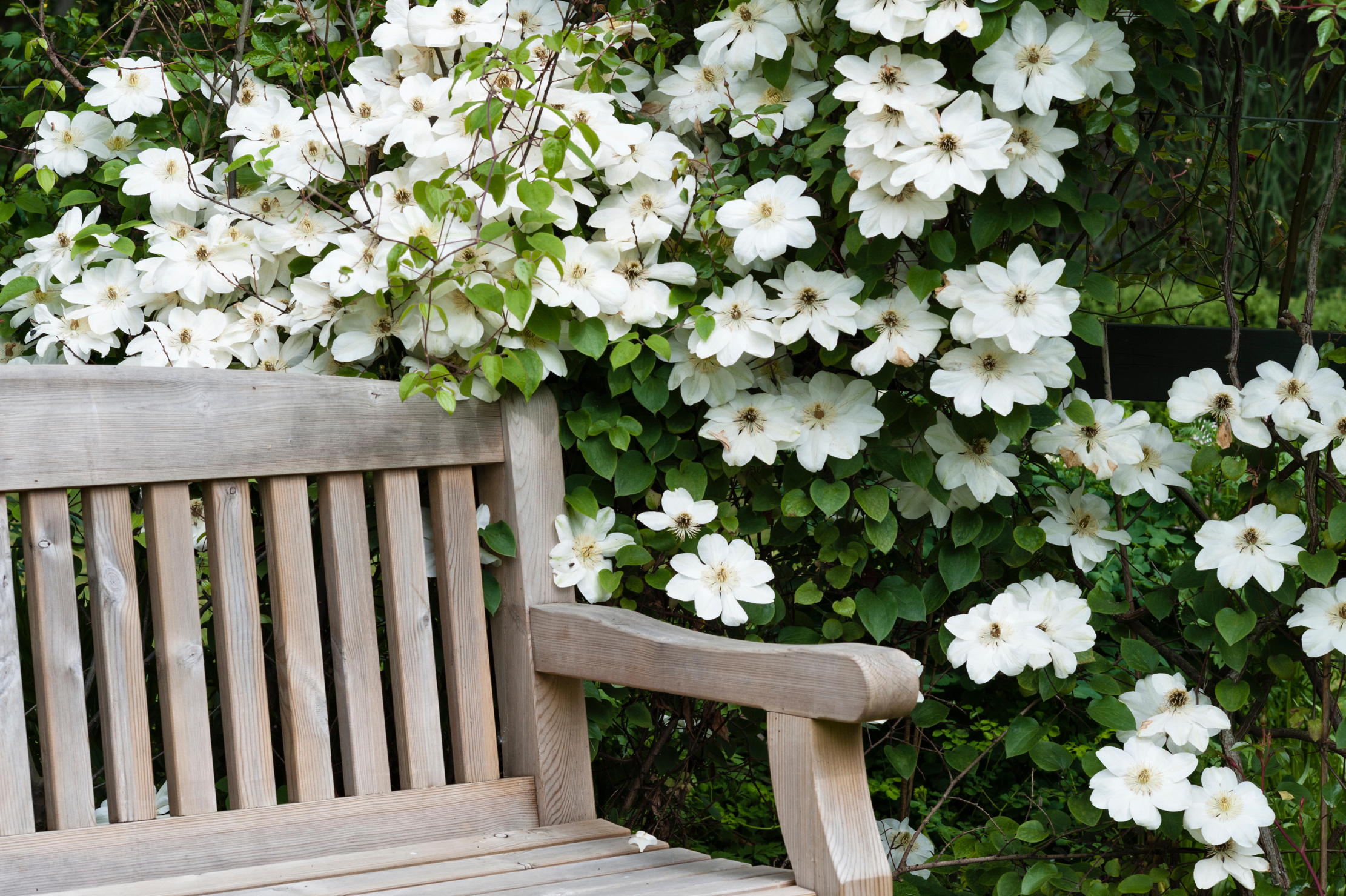Which hedge to plant where?
Mark Griffiths suggests examples of hedge plants to suit different purposes and needs in the garden


At Hatfield House, Robert Gascoyne-Cecil, towering Victorian Prime Minister and 3rd Marquess of Salis-bury, received some bad news from his physician: he was overweight and overworked. On doctor's orders, the Marquess obtained the cycling world's equivalent of a shire horse on which to trundle away the burdens of high office. He also commissioned an exercise track flanked by two rows of tall hedges. When finished, this avenue appeared to be end- less, certainly long enough to propitiate the Prime Ministerial doctor. In reality, it was (and remains) a masterstroke of trompe l'oeil. Although they appeared equal and parallel, the two lines of hedges had been planted and pruned so as to converge and grow shorter as they receded into the distance. Salisbury's cycle track was nowhere nearly so long as it looked. The result: happy doctor, happy Prime Minister.
For sheer nerve, this avenue has to be my favourite garden hedge, but Hatfield House contains scores of other examples of the art that run it a close second by virtue of their craft rather than craftiness. It is here that the now Dowager Marchioness of Salisbury embarked on a dazzling programme of historical re-creation, making new gardens in the spirit of great Cecil gardeners past. Given that the family employed such stars as Gerard and Tradescant, that means some very great gardeners indeed. It also means the 16th and 17th centuries, which, until today, were the golden age of garden hedging.
But earlier, in Tudor times, Francis Bacon described making a square garden: 'Encompassed, on all the four sides, with a stately arched hedge... The arches to be upon pillars of carpenter's work... and upon the upper hedge, over every arch, a little turret, with a belly, enough to receive a cage of birds... But there must be no alleys with hedges at either end of this great enclosure: not at the hither end, for letting your prospect upon this fair hedge from the green; nor at the further end, for letting your prospect from the hedge, through the arches, upon the heath.'
That is just one hedging feature of many in Bacon's ideal garden. Others include examples and precursors of what are termed allées and parterres, bosquets and palisades odd that we British, who hedge with such flair, have no words of our own for these schemes. Bacon even proposes a succession of 'little low hedges, round like welts', which might almost look forward to cloud pruning the Oriental technique, now fashionable in the West, of shaping shrubbery so as to make it appear molten and amoeba-like. What made an Elizabethan or Jacobean garden great is one of the few issues on which Bacon and the Cecils might have agreed: it was the bone structure, the rooms in which to display the mosaics and tapestries of flowers, the geometry with which to fashion cosmos from Nature's chaos. In short, it was the hedges, whether knee-high box or stilt-stemmed lime. Bacon's talk of a square garden 'encompassed' is telling. Some-where at the heart, or root, of all this planting was the most practical and mystical cultivation concept of all the hortus conclusus, the garden enclosed and protected from the hostile world beyond. Consciously or not, whenever we plant hedges, we revisit this primordial idea.
Like other early examples of the 20th-century garden as the English country house turned outdoors, Hidcote would be unthinkable without its walls of verdure. Just imagine all those rooms and galleries done in brick or stone. But I suspect it was Lady Salisbury's reinvention of Hatfield's Renaissance heyday, and later restorations such as the Privy Garden at Hampton Court Palace, that kindled our present interest in the decorous language of hedging. After centuries of shunning what grumpy old John Milton denounced as 'nice art' (nice in the sense of contrived and manicured) and chasing the chimera of gardens that ape wilderness, we opened our eyes to the delights of artifice.
An art revived is not necessarily backward-looking. Although antique in origins and technique, the hedge has proved itself to be as much a contemporary building material as concrete, glass or steel. St Catherine's College, Oxford, the 1960s masterpiece of Danish architect Arne Jacobsen, is an abstract geometric composition in which free-standing panels of hedging replicate the rectilinear surfaces of the building. Although no less avant-garde, the Flemish designer Jacques Wirtz makes less formal use of hedging, moulding beech, box and yew into organic forms that not only shape his gardens, but also inhabit them, like living sculptures. Then there are our own modern masters. 'Hedging,' says Christopher Bradley-Hole, 'is a medium that cries out for the experimental eye of the modern garden-maker.' It is an assertion that Minimalists have proved time after time in designs whose blocks of neutral, clean-edged green are the live counterpart of hard building materials, a mediator between solidity and softer planting.
A garden is fundamentally an enclosure, and the hedge one fundamental way of enclosing it a banal enough statement, and a pretty banal thing, a hedge, you might think. But what John Fitzherbert described in 1523 as a simple row of 'quicksettes' probably little more than a semi-housetrained hedgerow has evolved into a sophisticated art form: it has become the gardener's architecture. I claimed that, until today, the 16th and 17th centuries were the golden age of hedging. A little way into our own century, we can not only avail ourselves of the rediscovered skills and splendours of the Renaissance, we can also remodel them to new effect through the lessons of Modernism and whatever comes after it. Like the Prime Minister's doctor, we should tell those who baulk at the unnatural effort of maintaining these glories to get on their bikes. It is time to take a bet on hedging.
Sign up for the Country Life Newsletter
Exquisite houses, the beauty of Nature, and how to get the most from your life, straight to your inbox.
Country Life is unlike any other magazine: the only glossy weekly on the newsstand and the only magazine that has been guest-edited by HRH The King not once, but twice. It is a celebration of modern rural life and all its diverse joys and pleasures — that was first published in Queen Victoria's Diamond Jubilee year. Our eclectic mixture of witty and informative content — from the most up-to-date property news and commentary and a coveted glimpse inside some of the UK's best houses and gardens, to gardening, the arts and interior design, written by experts in their field — still cannot be found in print or online, anywhere else.
-
 The Business Class product that spawned a generation of knock-offs: What it’s like to fly in Qatar Airways’ Qsuite cabin
The Business Class product that spawned a generation of knock-offs: What it’s like to fly in Qatar Airways’ Qsuite cabinQatar Airways’ Qsuite cabin has been setting the standard for Business Class travel since it was introduced in 2017.
By Rosie Paterson
-
 Six of the best Clematis montanas that every garden needs
Six of the best Clematis montanas that every garden needsClematis montana is easy to grow and look after, and is considered by some to be 'the most graceful and floriferous of all'.
By Charles Quest-Ritson